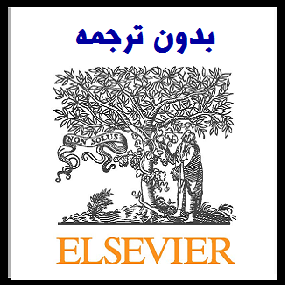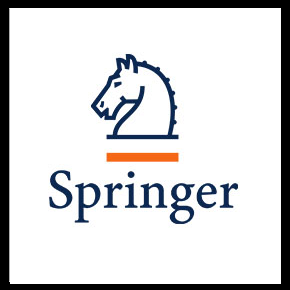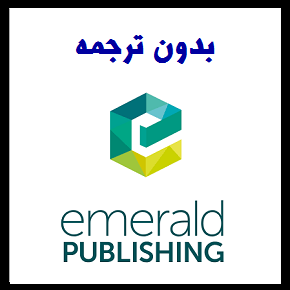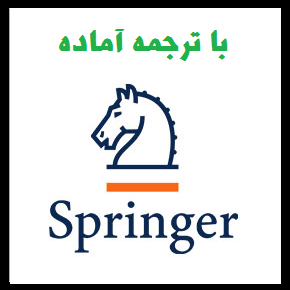مقاله انگلیسی بلاک چین و ادغام آن با اینترنت اشیا (2018 الزویر)


| عنوان فارسی مقاله | بلاک چین و ادغام آن با IoT. چالش ها و فرصت ها |
| عنوان انگلیسی مقاله | On blockchain and its integration with IoT. Challenges and opportunities |
| فهرست مطالب | Highlights Abstract Keywords ۱ Introduction ۲ Blockchain ۳ IoT and blockchain integration ۴ Platforms and applications ۵ Conclusion and future work Acknowledgments References Vitae |
| نمونه مقاله انگلیسی | abstractIn the Internet of Things (IoT) vision, conventional devices become smart and autonomous. This vision is turning into a reality thanks to advances in technology, but there are still challenges to address, particularly in the security domain e.g., data reliability. Taking into account the predicted evolution of the IoT in the coming years, it is necessary to provide confidence in this huge incoming information source. Blockchain has emerged as a key technology that will transform the way in which we share information. Building trust in distributed environments without the need for authorities is a technological advance that has the potential to change many industries, the IoT among them. Disruptive technologies such as big data and cloud computing have been leveraged by IoT to overcome its limitations since its conception, and we think blockchain will be one of the next ones. This paper focuses on this relationship, investigates challenges in blockchain IoT applications, and surveys the most relevant work in order to analyze how blockchain could potentially improve the IoT. © ۲۰۱۸ The Authors. Published by Elsevier B.V. This is an open access article under the CC BY license (http://creativecommons.org/licenses/by/4.0/).
Introduction The rapid evolution in miniaturization, electronics and wireless communication technologies have contributed to unprecedented advances in our society. This has resulted in an increase in the number of suitable electronic devices for many areas, a reduction in their production costs and a paradigm shift from the real world into the digital world. Therefore, the way in which we interact with each other and with the environment has changed, using current technology to gain a better understanding of the world. The Internet of Things (IoT) has emerged as a set of technologies from Wireless Sensors Networks (WSN) to Radio Frequency Identification (RFID), that provide the capabilities to sense, actuate with and communicate over the Internet [1]. Nowadays, an IoT device can be an electronic device from a wearable to a hardware development platform and the range of applications where it can be used encompass many areas of the society. The IoT plays a central role in turning current cities into smart cities, electrical grids into smart grids and houses into smart homes, and this is only the beginning. According to various research reports, the number of connected devices is predicted to reach anywhere from 20 to 50 billion by 2020 [2] mainly due to the vast number of devices that the IoT can place on the scene. The IoT visualizes a totally connected world, where things are able to communicate measured data and interact with each other. This makes possible a digital representation of the real world, through which many smart applications in a variety of industries can be developed. These include: Smart homes, Weareables, Smart cities, Healthcare, Automotive, Environment, Smart water, Smart grid, etc. IoT solutions are being deployed in many areas, optimizing production and digitizing industries. IoT applications have very specific characteristics, they generate large volumes of data and require connectivity and power for long periods. This, together with the limitations in memory, computer capacity, networks and limited power supply pose a high number of challenges. The huge expansion of the IoT has to be supported by standard mechanisms and protocols in order to reduce the existing heterogeneity in the field. This heterogeneity leads to vertical silos and reduces the adoption of the IoT. However, aside from the heterogeneity and integration challenges present in the IoT, the trustworthiness of its data is also an important issue to bear in mind. Nowadays, we trust in the information of financial entities and the government among others, but can we be sure that the information provided by them and by other external entities, such as IoT companies, has not been tampered/altered/falsified in any way? This is a difficult question to answer in centralized architectures. Untrusted entities can alter information according to their own interests, so the information they provide might not be completely reliable. This brings about the need to verify that the information has never been modified. |
| سال انتشار | 2018 |
| ناشر | الزویر |
| مجله | نسل آینده سیستم های کامپیوتری – Future Generation Computer Systems |
| کلمات کلیدی | اینترنت اشیا، بلاک چین، قرارداد هوشمند، اعتماد |
| صفحات مقاله انگلیسی | 18 |
| مناسب برای رشته | مهندسی کامپیوتر، فناوری اطلاعات |
| مناسب برای گرایش | امنیت اطلاعات، اینترنت و شبکه های گسترده |
| توضحیات | این مقاله انگلیسی جدید بوده و تا کنون ترجمه نشده است. جهت ثبت سفارش ترجمه از لینکهای زیر استفاده نمایید. |
| دانلود مقاله انگلیسی | ○ دانلود رایگان مقاله انگلیسی با فرمت pdf (کلیک کنید) |
| سفارش ترجمه فارسی | ○ سفارش انجام ترجمه و تایپ این مقاله (کلیک کنید) |
| سایر مقالات این رشته | ○ مشاهده سایر مقالات رشته مهندسی کامپیوتر (کلیک کنید) |





